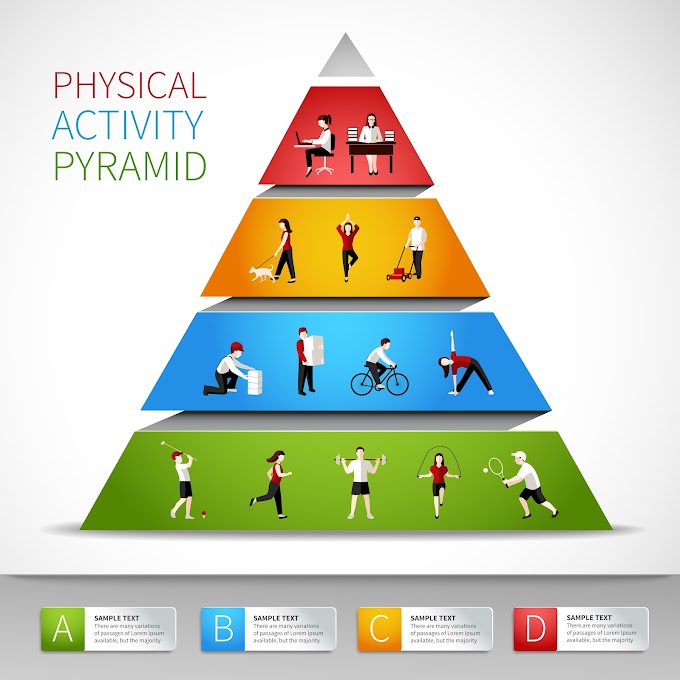Unraveling the Enigma of Prolonged Exhaustion: A Sojourn into ICD-10 Categorization ?
Pervasive fatigue, an insidious affliction, plagues multitudes worldwide.
Diverging from mundane weariness stemming from life's demands, this condition
materializes as a relentless, profound languor defying solace even in rest or
slumber. In the ensuing exposition, we shall embark on an expedition into the
complexities of prolonged exhaustion, focalizing on its classification within
the International Statistical Classification of Diseases and Related Health
Problems, 10th Revision (ICD-10).
Decoding Prolonged Exhaustion
1. The Essence of Prolonged Exhaustion
At its core, prolonged exhaustion epitomizes an all-encompassing and
enduring depletion, persisting for no fewer than six lunar cycles, impervious
to rejuvenation through repose. This debilitating state severely hampers an
individual's aptitude for daily endeavors and may even cast a pall on cognitive
acuity. Tasks once facile now metamorphose into Herculean trials for those
ensnared by this relentless affliction.
2. The Underlying Precursors of Prolonged Exhaustion
The precise genesis of prolonged exhaustion remains obscured in
nebulousness, believed to be engendered by a convoluted interplay of diverse
factors. Plausible instigators encompass viral infections, hormonal
disharmonies, immune system anomalies, and psychological constituents such as
stress and trauma.
1. A Glimpse into ICD-10
The International Classification of Diseases, 10th Revision (ICD-10),
stands as a globally embraced system orchestrating myriad medical conditions,
streamlining the diagnostic and billing endeavors of healthcare practitioners.
It bestows unequivocal codes for each ailment, facilitating standardized
documentation and comprehensive health data analysis.
2 . Prolonged Exhaustion's Niche in ICD-10
Within the aegis of ICD-10, prolonged exhaustion finds its abode under the
imprimatur of code "G93.3," ensconced within the purview of
"Other disorders of the nervous system." This meticulous
classification empowers healthcare professionals to discern and monitor
instances of prolonged exhaustion, nurturing enhanced comprehension and
research into this enigmatic predicament.
Symptoms and Diagnosis
1. Unraveling the Enigma of Prolonged Exhaustion
The labyrinthine odyssey of diagnosing prolonged exhaustion unfolds fraught
with challenges, bereft of explicit tests or markers to validate its existence.
Healthcare providers hinge on exhaustive medical histories, meticulous physical
examinations, and the methodical elimination of alternative sources of fatigue
ere pronouncing a diagnosis.
Managing the Onslaught of Prolonged Exhaustion
1. Metamorphosing Lifestyles
For those ensnared by prolonged exhaustion, the promise of amelioration
resides in effectuating transformative lifestyle alterations. These might
encompass the pursuit of sufficient rest, engaging in mild yet unwavering
exercise, adhering to a balanced dietary regimen, and conscientiously managing
stress levels.
2 . The Armamentarium of Medical Interventions
Though an outright panacea remains elusive, an arsenal of medical
interventions abounds to ameliorate symptoms and enhance daily functionality.
Interventions may encompass pharmaceutical agents to palliate pain or sleep
disturbances, as well as therapeutic modalities such as cognitive-behavioral
therapy (CBT), targeting the psychological facet of this malady.
Adopting Coping Strategies
1 . Fortifying Psychological Succor
The vicissitudes of prolonged exhaustion exact a toll on one's mental
well-being. Seeking psychological succor, be it through counseling or therapy,
proves to be a veritable lifeline in empowering individuals to traverse the
vicissitudes of life burdened by this enfeebling ailment.
2 . The Haven of Supportive Cohorts
Communing with supportive cohorts extends solace to those grappling with
prolonged exhaustion, fostering camaraderie and empathy. Exchanging experiences
and coping stratagems, these groups serve as a beacon of guidance in navigating
the undulating tides of this affliction.
Unraveling the Impact on Daily Life
Prolonged exhaustion casts an indelible imprint on the fabric of one's
quotidian existence. The mundane metamorphoses into a labyrinth, rendering even
menial tasks herculean, eliciting frustration and engendering an unsettling
sense of isolation. The empathic support of friends, family, and colleagues
becomes an indispensable cornerstone during these trying junctures.
Unveiling Research and the Journey Ahead
Perpetual research on prolonged exhaustion endeavors to illuminate its
enigmatic origins and identify potential therapeutic avenues. With each stride
in the realm of research, we harbor optimism for enhanced management and,
perchance, eventual emancipation from this pernicious scourge.
The Epilogue
In summation, prolonged exhaustion presents an indomitable challenge,
besetting countless lives worldwide. Its tenancy within ICD-10, ensconced under
the imprimatur of code G93.3, facilitates judicious identification and
monitoring of instances. Though a panacea remains elusive, the fusion of
medical and lifestyle strategies endows individuals with the potential to carve
gratifying lives despite the tribulations posed by prolonged exhaustion.
Querying the Enigma: Frequently Posited Questions
Can prolonged exhaustion be entirely exorcised ?
As of the present, prolonged exhaustion remains bereft of a definitive
cure.
Does chronic fatigue syndrome equate to prolonged exhaustion?
Chronic fatigue syndrome (CFS) delimits a specific term denoting the
presence of particular diagnostic criteria, as stipulated by the CDC. By
contrast, prolonged exhaustion encompasses an all-embracing state of lingering
enervation subsisting for no fewer than six months.
What hurdles attend the diagnosis of prolonged exhaustion?
The multifarious challenges attending the diagnosis of prolonged exhaustion
emanate from its subjective nature and the dearth of explicit diagnostic tests.
Healthcare providers undertake a fastidious process of elimination to ascertain
its presence.
Can children suffer from prolonged exhaustion?
Indeed, prolonged exhaustion can afflict children and adolescents, exacting
a substantial toll on their daily lives. A confluence of parental, educational,
and medical support proves pivotal in rendering solace to these young
sufferers.
Does exercise prove efficacious for those ensnared by prolonged exhaustion?
Whilst exercise garners salubrious effects on overall health, individuals
grappling with prolonged exhaustion must approach
Decoding the Enigma: Grasping ICD-10 Indications of Chronic Fatigue ?
Foreword
In the relentless whirlwind of the modern era, weariness has become an
all-too-familiar lament among countless individuals. Nevertheless, for a select
few, weariness metamorphoses into an enduring and incapacitating affliction
that profoundly disrupts their daily existence.
Unraveling the Chronic Fatigue Conundrum
Chronic fatigue denotes an incessant and enigmatic state of extreme
weariness persisting for over half a year. Unlike ordinary fatigue, which
recedes with repose and slumber, chronic fatigue tenaciously clings and shows
no succor in conventional rest. Its grasp extends over the corporeal and mental
well-being, gravely hindering the performance of quotidian tasks.
The ICD-10's Role
The ICD-10 serves as a sweeping and universally adopted diagnostic
instrument, bestowing a uniform framework for categorizing diverse medical
conditions. Chronic fatigue finds its niche under the code G93.3, identified as
"postviral fatigue syndrome" or "benign myalgic
encephalomyelitis." Armed with the ICD-10, healthcare practitioners can
astutely identify and diagnose chronic fatigue, facilitating the administration
of appropriate remedies.
Profound Fatigue
Chief among chronic fatigue's manifestations is an overwhelming sense of
exhaustion unrelieved by rest. Sufferers often recount feeling utterly depleted
both in body and mind, rendering even the most mundane tasks a daunting
challenge.
Chronic fatigue can precipitate cognitive decline, commonly referred to as
"brain fog." Afflicted individuals may grapple with concentration
issues, memory lapses, and diminished focus.
Despite extended hours of slumber, those beset by chronic fatigue wake up
feeling unrefreshed. Sleep disturbances and difficulties falling asleep pervade
their daily ordeal.
Muscular Agony and Pangs
The ICD-10 ascribes muscular pain and aches as salient signs of chronic
fatigue. Patients may endure diffuse pain, joint stiffness, and soreness,
accentuating their anguish.
Migraines
Chronic fatigue might be accompanied by recurring and intense headaches,
rendering conventional pain medications ineffective in relief.
Certain individuals wrestling with chronic fatigue may suffer from
persistent throat soreness and swollen or tender lymph nodes in the neck and
armpits.
Vertigo and Equilibrium Imbalance
Chronic fatigue might precipitate bouts of dizziness and challenges in
maintaining balance, exacerbating the ordeals faced by the afflicted.
Potential Triggers and Causative Factors
The precise etiology of chronic fatigue remains elusive, yet several
contributors can propel its emergence .
Chronic Fatigue Diagnosis
The diagnostic journey of chronic fatigue presents challenges due to the
paucity of specific tests. Healthcare professionals typically hinge their
evaluations on medical history, physical examinations, and a systematic
exclusion of alternative conditions before reaching a conclusive diagnosis.
Management and Therapy
Treatment modalities may encompass a fusion of cognitive-behavioral therapy
(CBT), graded exercise therapy (GET), and targeted medications to alleviate
specific symptoms.
Epilogue
Chronic fatigue is an incapacitating condition that besets millions
worldwide. Through the application of ICD-10 classification, healthcare
practitioners can adroitly diagnose and manage this condition, granting
much-needed solace to the afflicted individuals.























0 Reviews:
Post Your Review